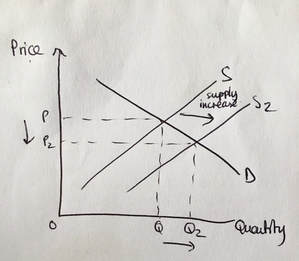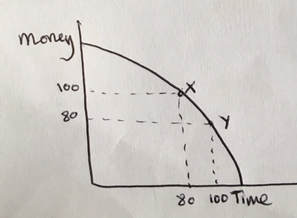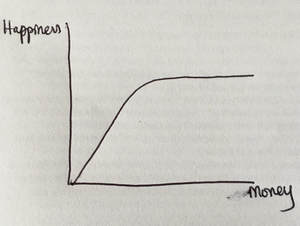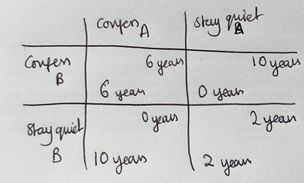|
22/2/2018 2 Comments vertigologyVertigo ˈvəːtɪɡəʊ/ Noun 1. a sensation of whirling and loss of balance, associated particularly with looking down from a great height. Some people absolutely hate looking down from high rise buildings, vertigo or no vertigo. But for me, whether I'm looking up from the bottom of a building, or looking down at the tiny moving cars and humans from the top of it, I'm in my happy place. Apart from the impressive skill and architecture, labour and project management involved in getting one of these up and standing, they do feature as statement pieces for numerous cities. Some more well-known than others, here are a number of buildings that I would recommend visiting in different cities, especially for the view from the top (or bottom). Having lived in London in my 20’s, many of the high rises I have mentioned are in London, but I still have my eyes on others around the world. 1. EIFFEL TOWER, PARISEiffel Tower is a weird metal tower that has been around for over 130 years, acting as a symbol for Paris for tourists around the world. Built to mark the 100th anniversary of the French Revolution, it’s the same height as a 81 storey building, although technically it only has 3 floors. I have never dared to take the 704 stairs to the second floor, but it’s equally nice to use the elevator just to save time and tick it off your bucket list (More time for wine… and raclette). Height: 300m Floors: 3 Claim to fame: marks the 100th anniversary of the French Revolution Since: 1887 2. HERRON TOWER, LondonThe Heron Tower a.k.a. 110 Bishopsgate is the third tallest building London and United Kingdom. To be honest, I didn’t (and sometimes still don’t) know which tall building is called what. The giant circular ‘SUSHI SAMBA’ logo attracts passers-by, tempting them to look up and approach the security guards inside (do it!). I personally go there for Duck and Waffle (open 24/7) as they seem friendlier than Sushi Samba, with a ‘single-floor’ difference. I can only imaging watching the sun rise, one day, when I can find a way to wake up at 5:30am to travel into the City from Greater London… one day. Height: 230m Floors: 46 Claim to fame: Duck & Waffle (and the speedy lift 'ride') Since: 2007 3. THE SHARD, LONDONI feel like I should mention the Shard as it’s the tallest building in Western Europe. I wouldn’t say it’s my favourite, but it has become a bit like the ‘Eiffel tower’ for London, which can be spotted from miles away. And the reason for leaving the top incomplete? Apparently, it’s both a metaphor for a ‘constantly evolving London’ as well as letting any excess heat that rises to the top, out to the skies. I had a birthday meal at ‘Ting’ which was lovely, but not sure I have warmed to a ‘minimum spend’ policy for some of the other bars (Gong Bar) when we have so many other friendly skyscrapers nearby. Height: 309.6m Floors: 95 Claim to fame: Western Europe's tallest building Since: 2013 4. ST MARY’S AXE, LONDONWith its distinctive shape, St Mary’s Axe (The Gherkin) was built where the Baltic Exchange used to be, which was destroyed by a bomb in 1992. On a happier note... there’s an awesome bakery at the bottom of the building (Konditor & Cook) as well as a few food stalls in the courtyard. One of the stalls had a loud, excitable Canadian man who made, what was in my mind, the best marshmallow brownie I have and probably will ever taste(d). As for the top of the building, there is also a big hole at the top of the ceiling (to let the heat out as well), with plenty of perspex glass around to make the London sunrise and sunsets look even more extraordinary. The restaurant at the top is quite expensive, but if you like the less-busy, isolated seating with a view and occasional live jazz music, it’s worth a visit. Height: 180m Floors: 41 Claim to fame: looks like a vegetable Since: 2004 5. TOWER 42, londonDespite Tower 42 being one of the oldest skyscrapers in the UK, if it wasn’t for the cocktail bar at the top of the building, I probably wouldn’t have gone inside the building. The first time we went there, two of my best friends from university and I went to the bar (Vertigo 42) for some birthday drinks. We ordered wine and some nuts, which as students, was still a bit on the steeper side (we probably ate toast and popcorn for the rest of the week). There’s a Paul’s Bar (usually a French bakery) at the ground floor area, which is equally expensive, so you may as well reserve and go to the top. Height: 183m Floors: 42 Claim to fame: Vertigo 42 Since: 1941 1. CN TOWER, TORONTOThe CN Tower is another weirdo like Eiffel Tower. It's a communications and observation tower made of concrete. It's got a new thing called 'Edge walk' which lets groups of six walk hands-free around CN Tower, the world’s highest full circle hands-free walk at 356m above the ground. But if you're squeamish at the thought of 'hanging out' like that, then you could just hang out in the 360 bar, where we sat and watched planes take off and land from an airstrip for God knows how long... Height: 553m Floors: 144 Claim to fame: it was the World's tallest free-standing structure for over 30 years until 2007. Since: 1976 2. EMpire STATE building, new yorkThis is the first name that used to come to mind if someone mentioned the word 'skyscraper', obviously when I was a lot younger. It was the tallest building in the world for almost 40 years after all. The museum inside the second highest floor is quite interesting, where you can see images of labourers who worked on the building for just over one year, in black and white images (yes, that old!). Being at the core of NYC, open 365 days a year, this trademark skyscraper doesn't sleep. In fact, it plays around in the night skyline with different colour schemes... whether it's the usual white, or in the American Flag's form. Such a moody building. You can see how it looks every week here. Height: 443m Floors: 102 Claim to fame: tallest building in the world for almost 40 years and was built in 410 days! Since: 1931 1. CARLTON centRe, JOHANnesburgAlthough I absolutely love the skyline in Nairobi, Kenya where I was born including really old buildings like Kenyatta International Conference Centre since 1974, the Hilton since 1969, IPS building since 1967 and more, the first skyscraper I have been to was in South Africa, the Carlton Centre. Based in Jo'burg, it's a shopping centre and office building which promotes African history. At 50 floors high, it's still the tallest building in Africa, although several others are in the pipeline as the continent's financial hubs expand. Height: 223m Floors: 50 Claim to fame: tallest building in Africa Since: 1973 1. STATE TOWER, BANGKOKThis one's a newbie, and you can tell! Built in 2001, it is the largest building in Southeast Asia, with 3.2 million square feet of floor area. State Tower is one of the tallest (and poshest) buildings in Thailand that conquers the Bangkok skyline in style. It's home to one of the best cocktail bars I have ever been to (Sky Bar, Lebua). Live music, a chilled drink, 360 degree panoramic views of the city, good weather and you'll feel like you're 'on top of the world'. Don't forget to wear a shirt and jeans or trousers (guys) and ladies, nice sandals or shoes as opposed to flip flops (as tempting as it may be on your holiday). It's a bit of a 'fancy' place (but the service and everything else makes the effort totally worth it). Height: 247m Floors: 68 Claim to fame: Lebua (Rooftop bar) Since: 2001 2. petronas towers, kuala lumpurThese towers are an icon for Kuala Lumpur. The Petronas Towers are inspired by the fourth Prime Minister of Malaysia's (Tun Mahathir Mohamad's) vision for the country to be a global contender. It took seven years to build and involved daily transfers of over 500 trucks of material and digging 30 metres below ground level. It's mostly made of concrete but the steel and glass 'look' was intended to be a reflection of the country's Islamic art and religion. Height: 452 Floors: 88 Claim to fame: tallest twin towers in the world. Since: 2001 did you know...These are all obviously from my personal experience, and as central business districts become increasingly populous and countries build more and more high rises to accommodate and demonstrate their potential to the world, none of us need to worry about running out of rooftop bars to visit!
Now for some fun facts:
2 Comments
22/2/2018 0 Comments HOLY DAYS
holiday
ˈhɒlɪdeɪ/ noun
Most of the holidays I have been on, whether it's in Europe, South America or Asia involve monuments, many of which are meant to have some form of religious and historical resemblance. Temples, Mosques or Mausoleums, Churches, Chapels or Cathedrals, these were built and in most cases remain as places to seek refuge, practice religion and faith, or just appreciate. I have tried to pick a few of the most memorable 'holy' places I have been to, using my Instagram photos. 1. angkor wat
|
Home |
Categories |
|





 RSS Feed
RSS Feed